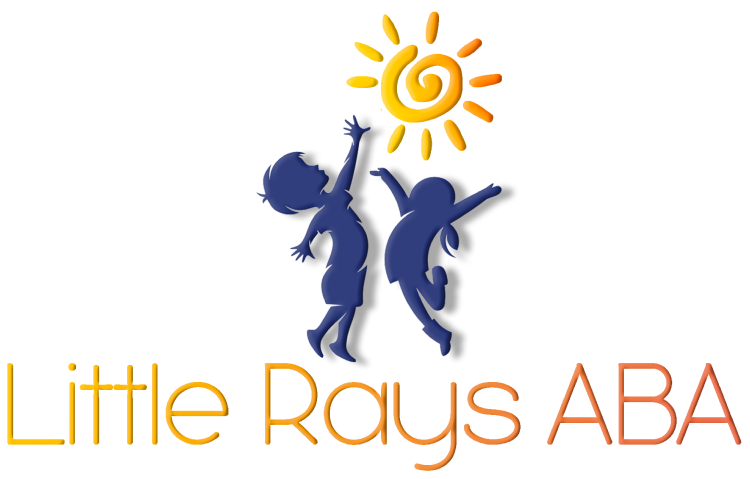The Overlap Between Autism and Intellectual Disability
Many parents come to me confused about the relationship between autism and intellectual disability. Are they the same thing? Do they always go hand-in-hand? The short answer is: not always, but they often overlap—and knowing what that means can help you better support your child’s development.
I once worked with a teen named who struggled with severe social anxiety and delayed cognitive development. Her dual diagnosis felt like a puzzle at first. But once we broke down her needs into achievable goals and collaborated with her support team, she began to flourish both academically and emotionally.
Understanding Autism and Intellectual Disability
Defining Autism and Intellectual Disability
As someone who works in ABA therapy, I often meet parents who are trying to make sense of what their child’s diagnosis really means. So let’s start at the foundation—understanding the difference between autism and intellectual disability.
Autism is a complex neurodevelopmental condition that impacts communication, behavior, and social interaction. People on the autism spectrum often experience the world differently. They may have a hard time interpreting social cues, prefer structured routines, and face challenges with both expressive and receptive language.
On the other hand, intellectual disability—often called ID—is marked by significant limitations in both intellectual functioning and adaptive behavior. This means it can affect learning, daily living skills, and how someone navigates the world socially and practically. Typically, an IQ below 70, along with difficulties in areas like self-care and communication, points toward an ID diagnosis.
Understanding both of these conditions on their own is important—especially when they show up together.
The Relationship Between Autism and Intellectual Disability
There’s actually a pretty significant overlap between autism and intellectual disability. We refer to this as comorbidity, and it’s more common than many people realize.
In my experience, it’s not unusual to work with individuals who meet the diagnostic criteria for both. Here’s a quick snapshot to give you some perspective:
| Diagnosis | Prevalence Rate (%) |
|---|---|
| Autism Only | 30 - 40% |
| Autism with ID | 40 - 70% |
| Intellectual Disability Only | 1 - 3% |
When both autism and ID are present, it can create additional layers of challenge—not just in how a child develops, but also in how we approach education, therapy, and day-to-day life.
That’s why understanding this relationship is so crucial. It helps families, educators, and professionals like me provide truly individualized support that meets the person where they are.
Prevalence and Diagnosis
Statistics on Co-occurrence
If you’re a parent or caregiver, one of the first questions you might ask is: How common is this?
Research tells us that a large percentage of individuals with autism also have some form of intellectual disability. Here’s what that breakdown looks like:
| Level of Intellectual Disability | Percentage of Individuals with Autism |
|---|---|
| No intellectual disability | 31% |
| Mild intellectual disability | 28% |
| Moderate intellectual disability | 28% |
| Severe intellectual disability | 13% |
Percentages may not sum to 100% due to rounding
Nearly two-thirds of individuals on the autism spectrum may also experience some level of ID. That’s a big number—and it’s why early diagnosis and tailored interventions are so important.
Diagnostic Process for Autism and Intellectual Disability
Getting an accurate diagnosis takes time and a multi-step approach. I always advise parents to trust their instincts—if something feels off developmentally, it’s worth exploring.
Here’s what the typical process looks like:
- Initial Screening: This is where most journeys begin. Parents or caregivers may notice delays or differences in behavior, and pediatricians often use screening tools to identify areas of concern.
- Comprehensive Evaluation: If screening flags a potential issue, a deeper assessment follows. This usually involves a team of specialists—psychologists, pediatricians, speech therapists—looking at everything from communication to adaptive behavior.
- Diagnostic Criteria: Professionals use specific guidelines from the DSM-5 to determine whether someone meets criteria for autism or ID—or both. For ID, they also assess how the individual functions in everyday life, not just their IQ.
- Final Diagnosis: Once all the pieces are in place, a diagnosis is made. This allows us to tailor therapies and supports more effectively.
In my practice, I’ve seen how the right diagnosis can open the door to real, meaningful progress. It’s not just about labels—it’s about understanding needs.
Characteristics of Autism and Intellectual Disability
Understanding what this dual diagnosis actually looks like helps us better support those who experience it. Autism and intellectual disability, when they occur together, can affect everything from communication to learning style to emotional regulation.
Behavioral and Social Differences
Some of the most noticeable charact eristics I see in clients with both autism and ID include:
- Social Challenges: Difficulty forming relationships, limited eye contact, and a tough time reading social cues.
- Repetitive Behaviors: Things like hand-flapping, lining up objects, or needing very specific routines.
- Communication Differences: This might mean delayed speech, reliance on gestures, or difficulty understanding language.
Cognitive and Learning Challenges
When intellectual disability is also present, it adds another layer to how someone processes the world:
- Cognitive Differences: Learning might take longer, and abstract thinking can be more difficult.
- Learning Style: These individuals may need visual supports, more repetition, or one-on-one teaching to fully grasp concepts.
- Attention and Focus: Maintaining attention can be a real challenge, which can affect everything from academics to daily life skills.
The important thing here is: no two individuals are exactly alike. That’s why flexibility, patience, and compassion are key.
Challenges and Support
Daily Living Challenges
One of the things I try to help families understand is just how hard daily life can be for someone with autism and ID. Everyday things like:
- Communicating needs
- Managing social situations
- Handling personal hygiene
- Following routines at school or home
...can all feel overwhelming without the right support.
When I’m working with a client, these areas are often where we start—because mastering daily living skills builds confidence and independence.
Therapies and Interventions
There’s no one-size-fits-all approach, but here are some of the most effective therapies I recommend:
- ABA Therapy: Applied Behavior Analysis is my area of focus. It helps build positive behaviors and reduce challenging ones through
reinforcement techniques.
- Speech Therapy: This helps improve both verbal and nonverbal communication.
- Occupational Therapy: Especially useful for building self-care and fine motor skills.
- Social Skills Training: Gives individuals the tools to engage in meaningful interactions with peers.
- Educational Support: Through IEPs and tailored learning strategies, we help each child access education in a way that works for them.
I’ve seen incredible growth through these interventions. Progress might be gradual, but it’s deeply meaningful.
Navigating Care and Resources
Healthcare Providers and Specialists
The journey can feel overwhelming at first, but assembling a strong care team makes a world of difference. In my experience, collaboration between providers is what truly drives progress.
Some key members of that team often include:
- Pediatricians
- Psychologists
- Speech and Language Therapists
- Occupational Therapists
- ABA Therapists
When we all work together toward shared goals, the support becomes more consistent—and that consistency is powerful.
Accessing Community Support
Outside of clinical care, community support is just as important. Families thrive when they’re connected to resources and others walking similar paths.
Some valuable options include:
- Support Groups for emotional connection and practical advice
- Educational Programs to help navigate the school system
- Respite Care so caregivers can recharge
- Nonprofit Organizations that offer everything from advocacy to therapy referrals
- Local Autism Centers for specialized support
If you’re a parent or caregiver, I always encourage you to lean into these resources. You don’t have to do this alone.
Advocacy and Awareness
Promoting Inclusivity and Understanding
The more we talk about autism and intellectual disability, the more we can break down stigma. In schools, workplaces, and the community, education is the first step toward inclusion.
Whether it’s hosting workshops, updating teacher training, or improving media representation, we all have a role to play in making the world more understanding and accessible.
Advocacy Efforts and Resources
Thankfully, there are many organizations out there doing amazing work to support families and advocate for better systems. They:
- Host awareness campaigns
- Share educational materials
- Fight for policy improvements
- Connect families to support groups and resources
When families engage in advocacy—whether big or small—it helps build a more compassionate world for individuals with autism and intellectual disabilities.
If there's one thing I’ve learned in my work, it’s this: every individual has potential. With the right support, understanding, and care, individuals with autism and intellectual disabilities can live meaningful, joyful lives. And as caregivers, professionals, and community members, we all have the power to help them thrive.
At Little Rays ABA, we specialize in personalized, compassionate ABA therapy that meets your child right where they are. Whether you're looking for guidance, in-home support, or a team who genuinely understands your family’s needs, we're here to help.
Call us at 305-306-1443 or email us at aba@littleraysaba.com to take the next step toward meaningful progress.
FAQs
Is autism considered an intellectual disability?
No, autism and intellectual disability are distinct conditions. However, they can co-occur, meaning some individuals with autism may also have intellectual disabilities.
How can ABA therapy help with autism and intellectual disability?
ABA therapy supports skill-building in communication, behavior, and daily living—helping individuals with both autism and intellectual disability grow with more independence.
What are the signs of both autism and intellectual disability in children?
Signs may include challenges with social interaction, delayed language, repetitive behaviors, and difficulties with learning, problem-solving, and self-care skills.
Sources:
- https://research.chop.edu/car-autism-roadmap/intellectual-disability-and-asd
- https://pmc.ncbi.nlm.nih.gov/articles/PMC4185273/
- https://www.autismparentingmagazine.com/autism-vs-intellectual-disability/
- https://www.thetransmitter.org/spectrum/the-blurred-line-between-autism-and-intellectual-disability/
- https://www.education.sa.gov.au/docs/support-and-inclusion/practice-guidance/autism-and-intellectual-disability-fact-sheet.pdf
- https://pmc.ncbi.nlm.nih.gov/articles/PMC6683759/
- https://health.ucdavis.edu/news/health-wellness/fragile-x-is-a-common-cause-of-autism-and-intellectual-disability/2020/10
Related Posts





